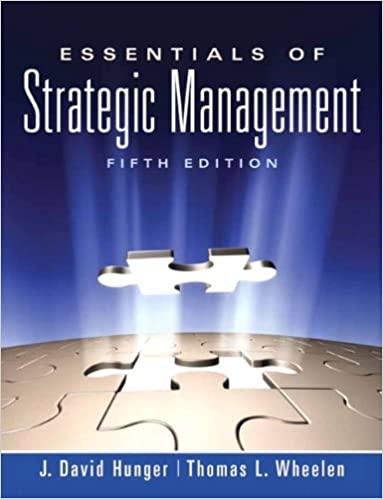Answered step by step
Verified Expert Solution
Question
1 Approved Answer
SECTION A Introduction to the selected industry Business Tourism. Define Sustainable tourism. Review how acting sustainably in the tourism industry will benefit the people, planet,
- SECTION A
- Introduction to the selected industry "Business Tourism".
- Define Sustainable tourism.
- Review how acting sustainably in the tourism industry will benefit the people, planet, and profits.
- Increase Profit - Economic Efficiency:
- Generating revenue through creating employment and investment.
- Reducing cost using efficient business practices
- Support local businesses by encouraging tourists to spend at local businesses.
- Promote foreign exchange through international tourism.
- Providing benefit to the planet - Environmental Accountability:
- Preserve natural resources, habitats, ecosystems, and biodiversity.
- Decrease carbon emissions and footprints.
- Implement energy efficiency and waste management practices.
- Reduce the impact of tourism activities on the environment.
- Providing benefit to the people - Social Equity:
- Increasing amenities to support tourist activities, e.g., recreation facilities, and parks.
- Promote peace and inclusion and cultural tolerance.
- Invest in residents through training and capacity building.
- Involve local residents in decision-making and legislation.
- Increase Profit - Economic Efficiency:
- Metrics/Indicators applicable to tourism sustainability.
- Economic Efficiency Metrics
- WasteRevenue per available room (RevPAR)
- Return on investment (ROI)
- Labor productivity
- Tourism expenditure
- Average daily rate (ADR)
- Energy consumption per tourist
- Water consumption per tourist
- Tourism value added (TVA)
- Occupancy rate
- Waste management metrics
- Social Equity Metrics:
- Supplier diversity and support for local businesses
- Stakeholder inclusivity and diversity
- Staff training and development opportunities
- Cultural heritage preservation and promotion
- Community engagement and participation
- Employee satisfaction and well-being
- Environmental Accountability Metrics:
- Environmental certifications and standards achieved.
- Renewable energy usage
- Carbon footprint and greenhouse gas emissions
- Energy efficiency and reduction targets
- Biodiversity conservation efforts
- Sustainable transportation measures
- Use of eco-friendly materials and practices
- Water conservation and efficiency
- Waste reduction and recycling rates.
- Economic Efficiency Metrics
- Analysis of how the tourism industry acts sustainably (strengths, weaknesses, opportunities, and threats.)
- Strengths:
- Promote responsible tourism by increasing awareness of the importance of sustainability.
- Develop frameworks and guidelines for implementing sustainability certification/programs.
- Use environmental initiatives such as energy efficiency and waste management initiative.
- Weaknesses:
- Lack of consistent implementation of sustainable practices.
- Challenge with managing tourist destinations leading to strain on local resources.
- Limited knowledge of sustainability practices by some businesses and locals
- Opportunities:
- Involve local communities in tourism planning and decision-to ensure that their interests are considered.
- Foster collaboration among businesses, governments, and local communities to share best practices, and drive collective action towards sustainability goals.
- Threats:
- Challenge for the tourism industry on choosing profit motives over sustainability goals.
- Commercialization of culture and the erosion of authentic experiences can negatively impact communities.
- Climate change can impact natural attractions, infrastructure, and tourism.
- Strengths:
- SECTION B
- Propose project
- Project Name: Project Green Power.
- Project Description:
- Introduction to the project and its purpose
- Project goals and objectives and how it supports tourism sustainability (economic efficiency, social equity, environment accountability)
- Stakeholder Engagement
- Project Scope
- In Scope (sustainability initiative and activities to be implemented)
- Out Scope
- Propose project
- How the project would directly improve sustainability.
- Risks, Dependencies and Assumptions
- SECTION C
- PMI Code of Ethics and Professional Conduct
- Responsibility: How will the project promote sustainable tourism and minimize negative impacts on the environment, local communities, and cultural heritage?
- Respect: Ensure the stakeholder perspectives and concerns are considered. How does the project affect the right, values, and culture of the local communities?
- Fairness: Ensure that all stakeholder gain from the project benefits and opportunities.
- Honesty: Communicate project objectives, challenges, and progress with all stakeholders.
- Project Manager role in satisfying PMI requirements:
- Project manager should set ethical standards.
- Engage Stakeholders and address their issues.
- Regularly monitor project timeline, activities, and risk.
- Stay updated on best practices and guidelines on tourism sustainability that will support the project.
- PMI Code of Ethics and Professional Conduct
- SECTION D
- Stakeholder Identification:
- Project Manager
- Government
- Local Communities
- Hotel &Restaurant Business
- Tourist
- Project Development Team
- Power Vs Interest Matrix:
- Provide a detailed stakeholder Profile including influence, expertise, and relationship with the project.
- Create a Power and Interest Matrix based on the stakeholder profile.
- Stakeholder Management Plan:
- Identify Stakeholders
- Power/interest classification
- Stakeholder interviews and communication
- Plan stakeholder management
- Stakeholder engagement
- Manage stakeholder engagement.
- Monitor stakeholder engagement.
- Stakeholder plan updates
- Identify Stakeholders
- Stakeholder Identification:
Step by Step Solution
There are 3 Steps involved in it
Step: 1

Get Instant Access to Expert-Tailored Solutions
See step-by-step solutions with expert insights and AI powered tools for academic success
Step: 2

Step: 3

Ace Your Homework with AI
Get the answers you need in no time with our AI-driven, step-by-step assistance
Get Started


